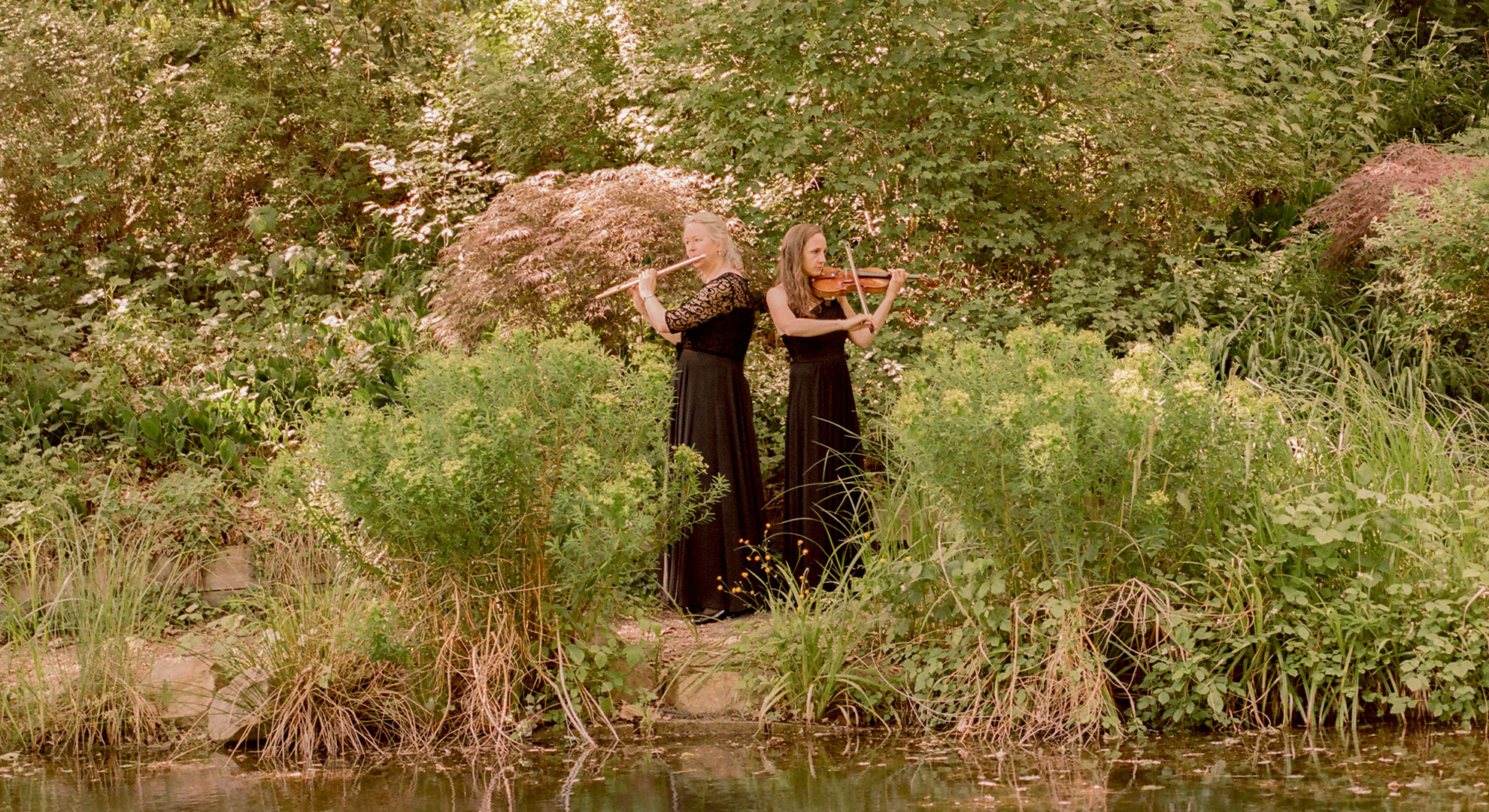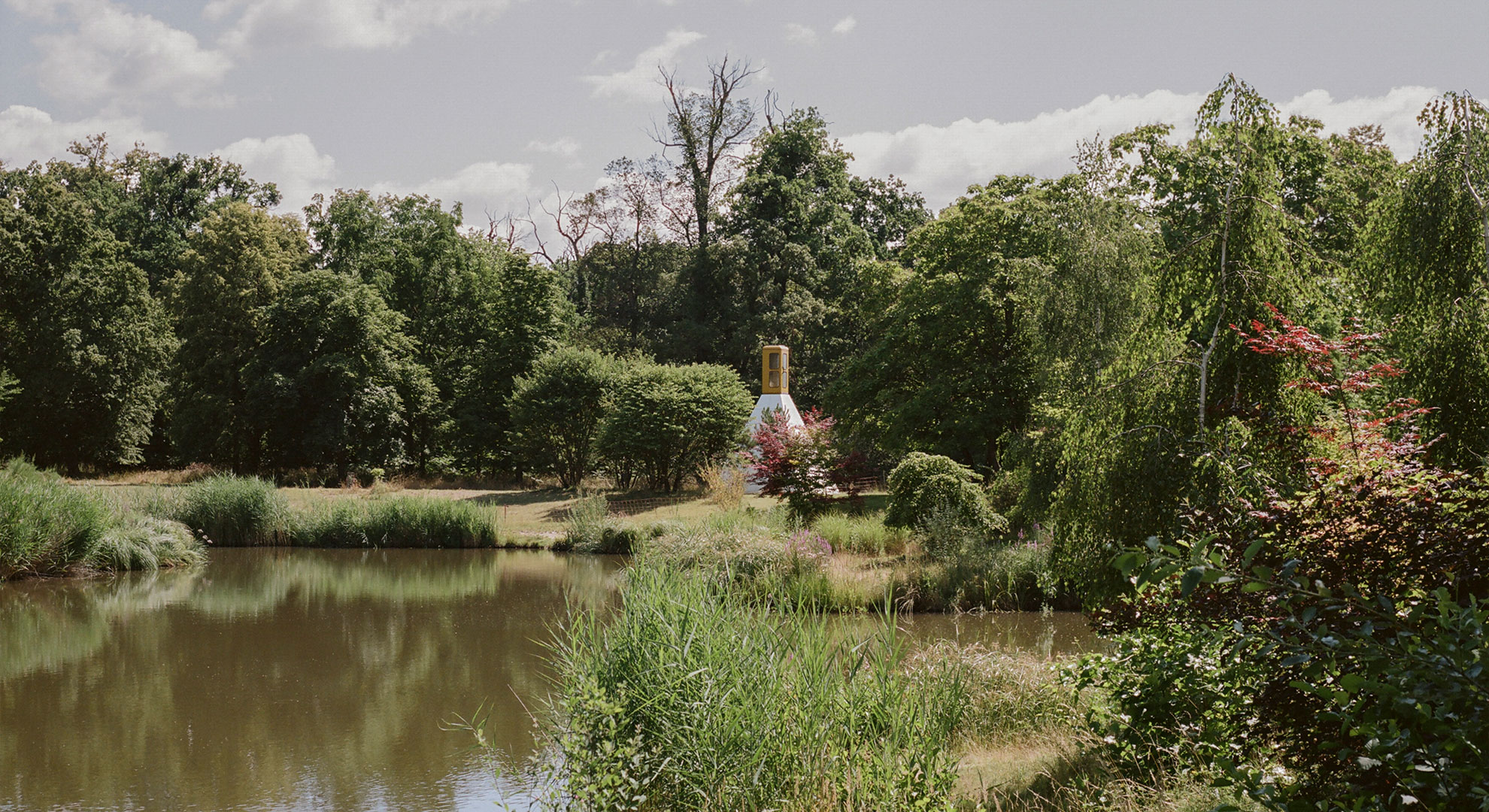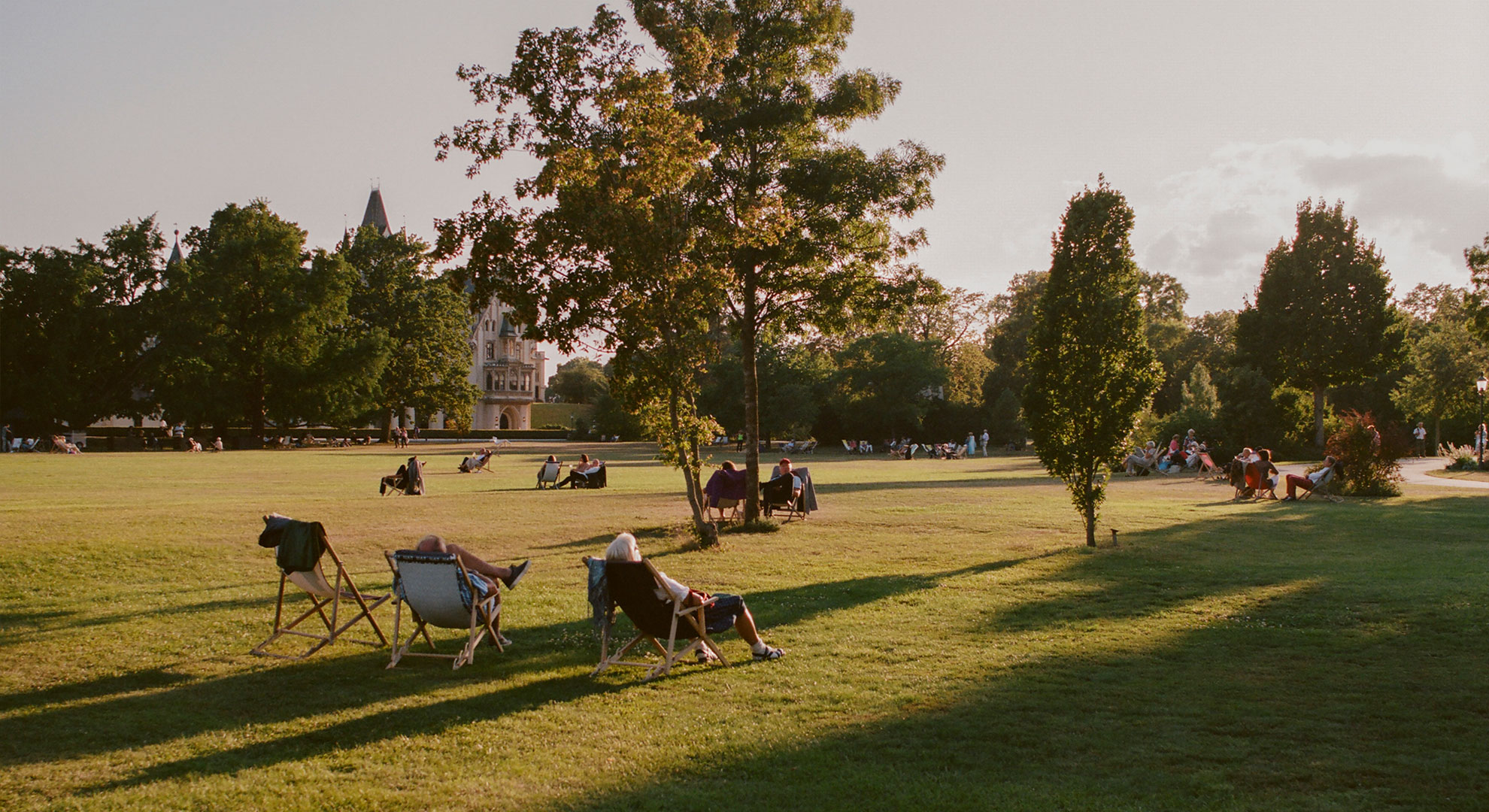© Lisa Edi
Grafenegg castle grounds
The Grafenegg castle grounds offer historical, botanical and very modern impressions in a formidable ensemble. On three circular tours starting at the Wiener Tor and ending at the castle, 300 years of the grounds’ history, rare plants from all over the world, architectural masterpieces and new works of art reveal themselves along 40 ground plates.
The fairytale-like castle is surrounded by hundreds of trees from all over the world, including a couple of rarities. The network of paths, on which you can explore the various phases of the grounds’ development, leads to the newly erected open-air arena, the Wolkenturm. Walking about, you also come across modern works of art – replenished over time and always surprising – like the Buchsdom Tower by US American artist Mark Dion, a unique ensemble of nature and human creative power.
Composer's in Residence trees
Every year, the annual Grafenegg Composer in Residence plants a tree that is typical of their country:
2007 · Krzysztof Penderecki · Rotlaubiger Trompetenbaum / Catalpa erubescens Purpurea
2008 · Heinz Holliger · Blauglockenbaum / Paulownia tomentosa
2009 · Tan Dun · Taschentuchbaum / Davidia involucrata
2010 · Cristóbal Halffter · Edelkastanie / Castanea sativa
2011 · HK Gruber · Gingko / Ginkgo biloba
2012 · James MacMillan · Schottische Föhre / Pinus silvestris
2013 · Brett Dean · Schmalblättrige Esche / Fraxinus angustifolia «Raywood»
2014 · Jörg Widmann · Winterlinde Erecta / Tilia cordata Erecta
2015 · Matthias Pintscher · Trauerweide / Salix alba tristis
2016 · Christian Jost · Papier-Birke / Betula papyrifera
2017 · Brad Lubman · Trauerweide / Salix Babylonica tristis
2018 · Ryan Wigglesworth · Stieleiche / Quercus robur
2019 · Peter Ruzicka · Purpurkastanie / Aesculus rubicunda
2020 · Konstantía Gourzí · Nussbaum / Juglans regia
2021 · Toshio Hosokawa · Tokio-Kirsche / Prunus yedoensis
2022 · Georg Friedrich Haas · Kornelkirsche / Cornus mas
History of the grounds
The first garden in Grafenegg was a geometric and baroque star garden to the west of the palace, which probably came into being from the mid-17th century onwards, together with a magnificent lime tree-lined walk extending eastwards from the star garden. Large parts of the remaining grounds were still fields and vineyards back then. The ideal behind such baroque planting (which was common to all gardens of the time) was the implementation of the absolutist idea – well-ordered, strictly symmetrical, artificial – embedded in the hierarchical system of categories of thought and power. Such gardens were usually arranged around a centre, which naturally stood for the absolutist ruler.
The restoration of the palace in historicist style in the middle of the 19th century was the main and decisive turning-point for the Grafenegg palace grounds, which was to have a lasting effect on their appearance. In other words: they were turned into an English park, its ideal being to integrate the grounds into the beauty of nature as it is. The straight lines from the baroque period gave way to rounded and winding paths, whereby the old lines of sight became barely recognisable. That time also marked the starting point of turning the palace grounds into an arboretum. A collection of trees from all over the world was brought to Grafenegg, which resulted in a list stating 175 different species in 1910.
Revitalisation of the grounds.
One of the most beautiful landscape gardens in Austria shines in a new light from 2008. The revitalisation measures have protected the multifarious history of the grounds and enhanced their experiencability. They now offer numerous views and insights again, particularly the wide lines of sight to the centrally located palace or the marked ensembles of trees closing the space, making even baroque elements visible again.
Various new plantings of trees and shrubs as well as newly laid out perennial areas garantuee an intense experience of the change of seasons with all kinds of dabs of blossom, scent and colour over the course of the year.
By restoring the Agathenweg and building a bridge, the western part of the grounds, where the watercourse of the Mühlkamp creates an atmospheric experience, has been newly developed. Among other things, this is due to the new Mühlkampausstand [Mühlkamp island] and the beech pond. Attractive seating and viewing areas invite you to tarry a while, and the grounds’ meadow landscapes are great for resting and picnicking. And, naturally, the imposing Wolkenturm open air theatre with its exciting architectural style is closely interwoven with the «new grounds». The meadow landscape deliberately falls in folds here – the boundaries between building and landscape are blurred.
Garden pavilion
For a long time the garden pavilion that lies between Grafenegg Castle and the Mühlkamp River was a tumbledown ruin and gave little impression of the theatrical evenings and feasts that once took place within. This former theatre in the castle grounds, an angular single-storey late baroque edifice with a hipped mansard roof, was built in the middle of the 18th century. It was once a fascinating sight with its richly stuccoed facade and interior wall-paintings, but in the course of the decades the decay set in.
As part of the regeneration of the castle grounds, the garden pavilion was completely renovated, and now the building gleams in new splendor. It can be hired for events of every kind: private parties, corporate receptions and speeches. Also weddings are possible in this especially festive and romantic atmosphere.
Akkoredeon stop
Art in the Grounds
The Grafenegg castle grounds, revitalised in 2008, are a prime example of the development of the European landscape park. The first garden in Grafenegg was a strictly geometric baroque star garden to the west of the castle, and was created in the mid-17th century together with a magnificent avenue of lime trees. The second decisive trend – the English park – however, was only implemented in a historicising style in the mid-19th century. The grounds as visitors find them today stem from this period and are marked by the attempt to make the park landscape look like it was grown naturally and to make the artificial intervention appear elemental. It was at that time that the castle grounds were converted into an arboretum.
In the past few years, the tradition of the grounds has been brought to the present. A new place for art and culture has been created which is open to the public. Apart from the Wolkenturm built by «the next ENTERprise», eight outdoor sculptures have been erected in cooperation with Kunst im öffentlichen Raum Niederösterreich and the Grafenegg Kulturbetriebsges.m.b.H.
Set against the backdrop of Grafenegg Castle, one of the most important historicist buildings in Austria, a total of eight artists were invited by the jury of Kunst im öffentlichen Raum Niederösterreich to critically examine the role attributed to art in staging and representing. In May 2017, the art ensemble was completed by three new temporary objects.
Current objects
Flaka Haliti Manufactured for the purpose of fainting (after screaming), 2020
Manfred Pernice «Tür und Tor», 2010
Little Warsaw Balance Capsule, 2008
Bethan Huws «Perroquets» Porte-manteaux (3-teilig), 2008
Werner Feiersinger Ohne Titel [untitled], 2008
Catrin Bolt Video projection, 2008
Mark Dion Buchsdom Tower, 2007
Temporary objects
Marjetica Potrc Drinking Water, 2009
Maider Lopez Mountain, 2013
Simon Faithfull «Earth-Spin no.1: Grafenegg», (temporary, 2017)
Elisabeth Penker «Composition With One Twisted Tone», (temporary, 2017)
Franz Kapfer «Mein Drama findet nicht mehr statt, # Akt 1–3», 3 installations, (temporary, 2017)
Akkordeon stop




